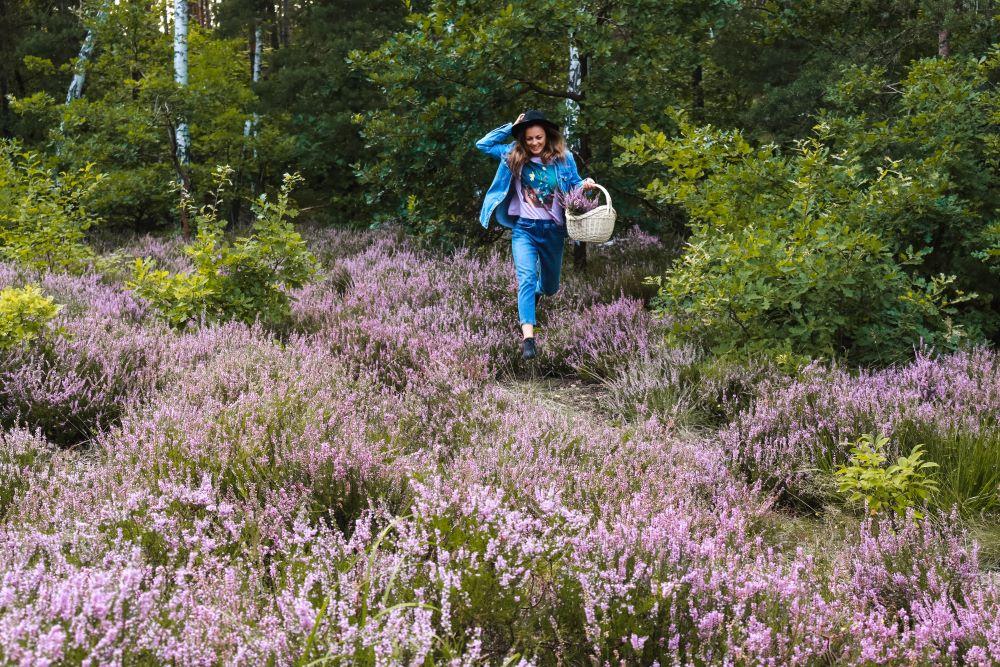Biodiversity is an essential part of our world, and its importance cannot be overstated. Picture it as the earth's treasure trove, filled with a diverse range of ecosystem services that all of us reap benefits from. Every species, whether it's a tiny bee or a towering tree, holds a fascinating role - such as pollination or water purification. Not only do these roles support our environment, but they also directly impact our lives.
Take a step back and think about the numerous life-saving drugs that we have today. Would you be surprised to know that many of these were inspired by nature itself? Yes, that's right! The rich tapestry of biodiversity has been our wellspring of inspiration and innovation.
However, this tapestry is under threat. Today, we are witnessing an alarming loss of biodiversity, a loss that is far from ordinary. This loss is happening due to several factors, deforestation, and climate change being the most prominent among them.
Losing even a single species is like pulling a thread from a woven cloth; it can unravel the whole piece, causing a ripple of impacts. Such losses can affect our health, our economy, and much more. In essence, the well-being of every single one of us is intertwined with the well-being of our biodiversity.
So, let's embark on a journey of understanding and conserving our biodiversity. It's not just about the survival of other species, but our survival as well. There is a universe to explore within this subject, and every step we take towards understanding it better is a step towards a healthier planet for us all.
Understanding Biodiversity
Table of contents [Show]
To truly grasp the significance of preserving biodiversity, it's crucial to first delve into what biodiversity really means and the immense scope it covers. Imagine this - it's the wondrous array of life on Earth, stretching from the smallest bacteria quietly thriving in the soil, to the majestic whale ruling the ocean depths. This spectrum of life forms, also known as genetic diversity, is the lifeline of our planet's health.
When we talk about the health of ecosystems, we're essentially discussing the harmony of species coexisting in a specific environment. Every species, no matter how minuscule, has a unique part to play in the larger ecosystem's performance. So, the disappearance of even one species can trigger a ripple effect with far-reaching consequences.
We're just on the brink of uncovering the deep layers of biodiversity's **complexity** and intricate nature. It's a fascinating journey of discovery that prompts us to see the **natural world** in a whole new light. So, let's continue to explore, understand, and appreciate the remarkable world of biodiversity together.
Importance of Biodiversity
Delving into the heart of the matter, the significance of biodiversity transcends mere importance - it's the very essence of our existence. Think of it as the lifeblood that keeps our planet healthy, offering a myriad of ecosystem services we often overlook. From the industrious bees that pollinate our crops, to the wetlands that act as nature's own water purifiers, biodiversity is the unsung champion of our world.
But there's more to this story. Biodiversity isn't just about nature; it's also about us. It's a treasure trove of resources for medical research and drug discovery. Did you know that an impressive 70% of drugs used for cancer are either natural or synthetic products, directly inspired by the wonders of nature?
Biodiversity Loss
It's unfortunate but true: we're currently experiencing a **dramatic decrease in biodiversity** that's unparalleled in the timeline of human existence. This swift downward trend has set off an **extinction crisis** that's hard to ignore. Various species are vanishing faster than we can blink, weakening the robustness of our ecosystems.
But let's not forget, it's not just the awe-inspiring, eye-catching creatures we're losing. We're also facing a concerning drop in our insect populations. These might be small creatures, but they play a huge role. As pollinators and decomposers, they deliver vital services to our ecosystem. The disappearance of these little heroes can upset the balance of our ecosystems, leading to impacts on our food production and even the quality of our water.
The ripple effects of biodiversity loss are massive and interwoven. These repercussions touch every corner of our life on Earth, from our economic stability to our personal health. This paints a clear picture: it's more important than ever to take swift action to reverse this worrying trend. We need to protect and preserve the vibrant mosaic of life that underpins our survival.
This topic might seem a bit overwhelming, but don't worry! We're here to guide you and make it as engaging and understandable as possible. So, let's dive in and explore this together.
Factors Contributing to Biodiversity Destruction
In our quest to comprehend the causes leading to biodiversity destruction, it's crucial to spotlight the significant role human actions have been playing in this worrying trend. The impact of human activities on our planet is nothing short of catastrophic, with the ongoing poaching crisis serving as a stark example.
Let's delve into four principal factors that are accelerating this destructive path:
- Deforestation: Imagine coming home one day to find your home flattened to the ground, your pantry empty, and nowhere to seek shelter. That's precisely what countless species face when we destroy their habitats through deforestation, leaving them without food and a safe haven.
- Pollution: Picture this - you take a breath, and instead of life-giving oxygen, you inhale a cocktail of harmful substances. That's the reality for many species as our activities contaminate the air, soil, and water, inflicting significant damage on wildlife.
- Climate Change: As we continue burning fossil fuels and emitting greenhouse gases, we're effectively cranking up Earth's thermostat. This rise in temperatures is leading to widespread habitat loss and even causing some species to disappear entirely.
- Poaching and Illegal Wildlife Trade: Imagine being hunted to the brink of extinction for a fleeting financial benefit. That's the harsh reality for many species as we drive them towards extinction through poaching and illegal wildlife trade.
To safeguard our planet's future, we must tackle these pressing concerns head-on. Remember, every step we take in the right direction brings us closer to preserving our planet's precious biodiversity. Let's take that step together.
Conservation Strategies
Let's dive into the riveting world of biodiversity conservation and look at the different strategies we can use to protect the diverse species of our planet from rapid decline.
Firstly, let's talk about sustainable agriculture. Think of it as a superhero for our environment, tirelessly working on maintaining the soil fertility, protecting the environment, and most importantly, supporting our biodiversity. It's like the secret recipe for producing food that doesn't harm our natural resources. So, every time we choose sustainable farming, we're making a significant impact.
Next up on our conservation strategy list is urban planning. Surprised? Well, the way we design our cities has a direct impact on local ecosystems. Imagine if we prioritized green spaces in our cities, built eco-friendly infrastructure, and created environments that are a haven for wildlife. Sounds dreamy, right? But it's not just a dream; it's a possibility. It's not just about preserving far-off, untouched areas; it's about weaving biodiversity conservation into the fabric of our daily lives.
Frequently Asked Questions
What Are Some Examples of Biodiversity Hotspots Around the World?
Many of us are curious about biodiversity hotspots - incredible locations on our planet teeming with unique life forms. Places like Madagascar, the Amazon, and the Coral Triangle immediately spring to mind. These regions face numerous threats, yet they persist, underlining their resilience and the importance of their preservation.
Let's take a closer look at these fascinating hotspots. They're not just random points on the globe, but rather, they're unique ecosystems bustling with life and diversity. These places are home to diverse species that cannot be found anywhere else on Earth.
Despite the threats they face, from deforestation to climate change, these hotspots stand as a testament to the resilience of nature. With the right preservation methods in place, we can help these ecosystems thrive and continue to contribute to our planet's biodiversity.
Join us as we explore these extraordinary places and learn more about the importance of biodiversity and its preservation. As we delve into these hotspots, you'll see that they're more than just geographical locations - they're living, breathing examples of the wonderful diversity and richness our planet has to offer.
How Does Biodiversity Affect Local Economies and Industries?
We are witnessing the remarkable way in which biodiversity is giving a significant boost to local economies and industries. It plays a crucial role in ensuring economic sustainability, casting ripples of influence across various sectors. Take farming and fishing for instance, where the richness of biodiversity directly impacts productivity and hence, profitability.
Then there's the spellbinding effect of biodiversity on tourism. A region teeming with diverse species of flora and fauna acts like a magnet for tourists. This influx of visitors not only generates jobs but also sparks economic growth, breathing new life into local communities.
In essence, the varied tapestry of life that is biodiversity, is not just an environmental treasure but also an economic powerhouse. So, let's dive deeper and explore how the preservation of biodiversity can be the key to unlocking sustainable economic growth and prosperity.
Are There Any Global Treaties or Conventions Aimed at Protecting Biodiversity?
Absolutely! There are indeed a number of global agreements that aim to protect the beauty and diversity of life on our planet. Two prime examples of these are the Convention on Biological Diversity and CITES (Convention on International Trade in Endangered Species of Wild Fauna and Flora). However, just like in any good adventure story, there are hurdles on our journey to protect biodiversity. These challenges come in the form of enforcing these agreements and putting biodiversity laws into action all around the globe. But rest assured, the quest continues as we strive for a world where nature's variety can thrive.
How Does Climate Change Specifically Impact Biodiversity?
The impacts of climate change are far-reaching, particularly when it comes to biodiversity. Imagine seeing animals migrate in unusual patterns, or witnessing changes in their habitats. This is what climate change does - it stirs up the normal rhythm of nature.
Climate change has a hand in manipulating the migration patterns of various species, compelling them to adapt in new ways. This might sound intriguing, but it's more alarming than fascinating. Animals are literally being compelled to change their lifestyle because their homes are becoming inhospitable.
Beyond affecting individual species, climate change also alters the dynamics of the food chain. As one species struggles, the effects ripple up and down the food chain, creating a domino effect. It's like pulling a thread from a sweater; the whole structure may unravel.
Most concerning is the increasing threat of extinction facing many species due to these climate-induced changes. This is the part where we need to sit up and take notice because losing our planet's rich biodiversity isn't just about saying goodbye to certain species - it's about the health and survival of our entire planet.
Understanding these impacts is crucial, not just for scientists and policymakers, but for each one of us. Because every step we take towards understanding is a step towards protecting our planet's precious biodiversity. It's a fascinating, yet challenging journey of discovery and we're all in this together. Let's learn, understand, and do what we can to make a difference.
Can Technology Be Used to Help Conserve Biodiversity and if So, How?
Technology is stepping up to the plate when it comes to conserving biodiversity, and it's doing so in some pretty amazing ways. Through the application of 'Technology in Ecology' and 'Digital Conservation Strategies', we're doing things that just weren't possible a few years ago.
Imagine being able to keep tabs on endangered species, understanding their movements and habits to help protect them better. Or being able to watch, in real-time, how biodiversity is changing and evolving. This isn't some sci-fi fantasy, it's happening right now, thanks to technology.
And the best part? You can be part of it. Technology is enabling us to draw the public into conservation efforts like never before. It's not just about scientists in labs or rangers in the field; everyone can play a part in this crucial work.
Conclusion
It's essential for us to fully understand the importance of conserving biodiversity. In simple terms, if we continue to exploit nature without thought for the future, the repercussions will be costly and extensive. The time has come to stop treating our ecosystems with disregard, much like a precarious game of Jenga.
We need to act responsibly to halt the rapid decline in biodiversity. It's our duty to ensure that we leave a fertile and thriving planet for future generations. This isn't a task we can afford to take lightly. It's time to engage in proactive conservation efforts that will sustain our planet's biodiversity and ensure a healthy environment for our descendants.
Remember, every action we take today will determine the world our grandchildren will inherit tomorrow.



